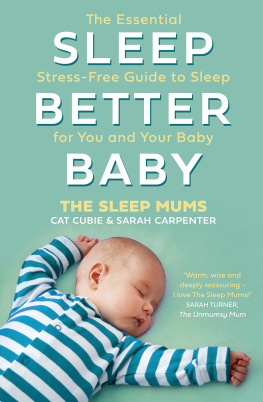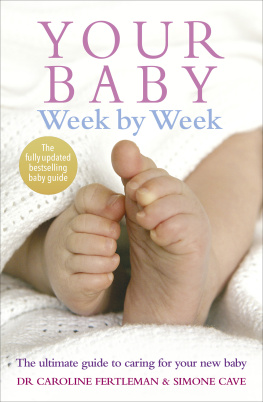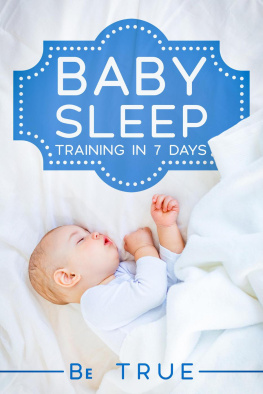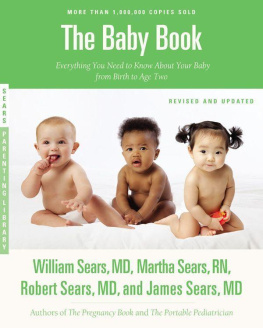Table of Contents
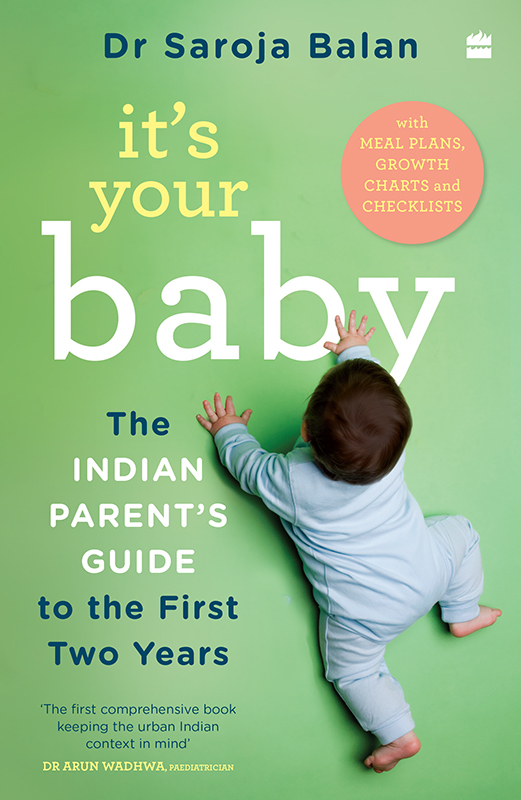

Contents

D r Saroja Balan, a very senior neonatologist with more than thirty years of experience, works in one of the state-of-the-art tertiary care hospitals in New Delhi. Her book is specially written for and dedicated to all parents and grandparents for the care of the baby from birth till the age of two years.
The first two years of an infants life are very crucial for optimal growth, development, and the babys vulnerability to various illnesses. This book highlights all aspects of babycare, including common illnesses. It also addresses domiciliary care and the danger signs that require you to contact your pediatrician in time. Pregnancy and childbirth are a physiological process, but proper advice and counselling are needed for an uneventful delivery. There are always apprehensions in the minds of expectant mothers regarding the dos and donts of care and precautions to be taken. This book perfectly describes the step-by-step care for those preparing themselves for both vaginal as well as elective caesarian deliveries.
The birth of a baby is one of the most memorable events for the family. All parents and their families require guidance for the smooth transition of processes from childbirth and the delivery room to immediate postnatal care of both mother and the baby. The initial chapters deal at length with this, and beautifully illustrate the care of both mother and child. There are many physiological changes that occur in the baby that may be very worrying for the parents and caregivers, but only need counselling and no intervention. The author has critically discussed all the physiological changes that are not harmful. Care of the umbilical cord and the application of several substances on the navel are practised in our community. Dr Balan has emphasized the need of applying only the recommended agents and not harmful substances. The babys first feed is crucial, and the importance of colostrum and, later on, breastfeeding on demand, the duration of each feed and the number of feeds, including night-time feeding, all find significant place in this book. The illustrations for breastfeeding technique, including ideal positions and latching, make it easier for new mothers to learn. The importance of breastfeeding, the timely introduction of solid/semisolid food, the need for formula-feeding and the reasons why bottles should be avoided, are very well elucidated. Sleep is a critical aspect of everyones life, and that includes both the mother and the baby. Every pediatrician is flooded with innumerable questions on sleep and sleep patterns. How to tackle what often becomes a big problem for new parents has been explained in depth. It is fascinating to watch ones baby growing, both physically and mentally. The chapter on growth and development has detailed illustrations on how physical and other developmental milestones are achieved and when to suspect that the baby needs help and attention from a pediatric specialist. Most parents worry about their babies bowel habits; the author has very ably discussed these vital aspects as well. The first bath and subsequent bathing routine; the dos and donts of oil-massaging the baby are elaborately described in the book. In India, we have many traditional practices and follow a variety of rituals for the care of both baby and mother. While some of these may be useful, others are definitely unnecessary, even harmful. Dr Balan mentions in detail about the traditional practices that are unsafe and should be avoided, and those that may be followed.
Every baby requires preventive measures to fight against infections, since their immunity is low. There is comprehensive discussion on how to take care of genitals after urination and defecation as well as the use of diapers and need for proper handwashing for the caregivers. One of the best methods of prevention of infectious diseases is timely vaccination. Dr Balan provides an excellent account of different vaccines, their relevance and uses.
There is a whole chapter on common infections e.g., upper and lower respiratory infections, diarrhoea, skin infections and, most importantly, Covid-19. Apart from infections, other non-communicable disorders like allergic conditions, bellyaches, burns, falls and injuries, and common orthopaedic problems, among others, also find important place in the book.
Preterm births may require special attention and some very preterm babies require critical care. Dr Balan does an outstanding job of explaining the parents role in the care of preterm babies.
Given the increasing number of disabilities that babies are born with these days, it is important to be aware of autistic spectrum disorder (ASD) so that it can be diagnosed early and addressed. There is a much-needed chapter on the subject in this book.
The most invaluable part of the book is the frequently asked questions (FAQs) in each chapter. The author has addressed all the queries that new parents and caregivers have, simply and clearly.
I congratulate Dr Saroja Balan for writing this excellent book, which includes the latest scientific knowledge and information and cites important references for every chapter. Its Your Baby will be an extremely useful and important guide, and should find a place in every household.
Dr Ashok K. Dutta
Former DirectorProfessor and Head of the Department of Pediatrics, Lady Hardinge Medical College, New Delhi
President, National Neonatology Forum of India 20012002

B eing a parent is both terrifying and exciting this is parenthood in a nutshell. Youll soon find that your time is no longer your own and you are now responsible for this creature, 24 hours a day, 7 days a week, with no time off for good behaviour. Now if that thought does not frighten you and have you running for the hills, then you are made of sterner stuff than most people I know. Having been there, I know what this feels like and I hope to guide you through the next 2 years of your babys life with detailed and up-to-date information backed by science. You may have many questions, ranging from why is my babys potty green in colour to why is my babycrying unconsolably, and I am hoping this book will answer most of them.
Take a look at the parenting section of any bookstore and youll notice two things lots of prettily coloured, voluminous books, and a cluster of confused and increasingly overwhelmed parents. The sheer number of books and movies, and additional support that new parents are offered, can have the opposite effect: Rather than equip parents, they inundate them with helpful advice that tends to forgo simplicity and conciseness at the expense of ease of access to first-time parents. For instance, if you were to have a child-related emergency in the middle of the night or at any point when you have only yourself to rely on, leafing through pages and pages of repetitive and hard-to-locate information is of little use. I have been practising paediatrics for nearly 30 years, and after each outpatient clinic I realise that Ive been answering the same questions day in and day out. There are times when Ive felt that I should just make a small pamphlet regarding common ailments and dosages of medicines like paracetamol just so that patients are able to access this information regardless of whether they come to see me.



